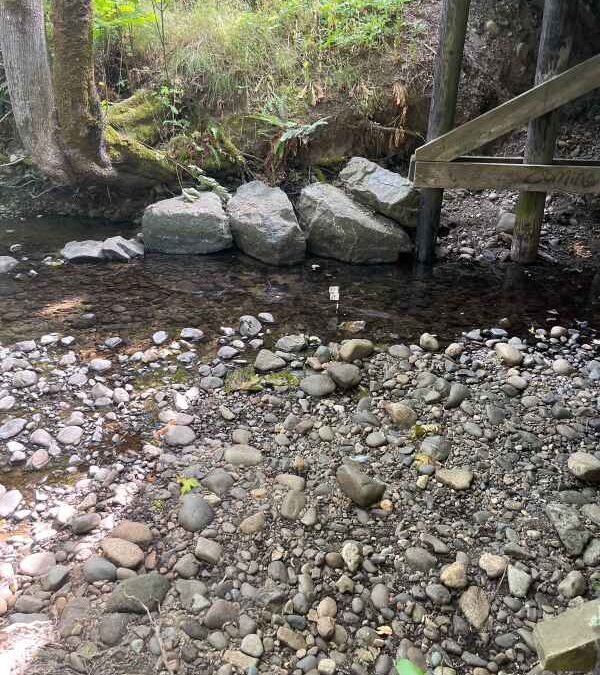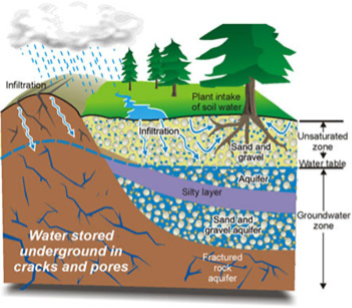Farmers, fisherfolk, and residents in the Koksilah Watershed are among those saying, “This feels like 2016.”
All of Vancouver Island is at drought level 5, which means that adverse impacts on communities and ecosystems is “almost certain”. As of July 20, 2023, the low flow of water in Xwulqw’selu Sta’lo (Koksilah River) is similar to, and is actually lower than, what we observed in July 2016.
- July 20, 2016: 0.413 cubic metres per second (cms)
- July 20, 2023: 0.269 cubic metres per second (cms)

How did we get here?
Consider the annual water cycle. The water levels and flows we notice in the summer are, in large part, a legacy of conditions from the previous spring, winter, and fall.
How sensitive a river is to drought conditions is a function of many variables related to climate, water use, and land use, including:
- When it rains or snows during the calendar year
- For how long it rains or snows: minutes, hours, or days
- The amount of rain or snowfall at a given time: Is there a big storm or a light sprinkle?
- How hot the summer is
- Characteristics of soil and rock that determine how easy it is for land to retain water
- How much water is removed from the watershed
Winter rain soaks into the ground and is stored in aquifers below our feet. Later in the summer, this water slowly drains out of soil pores and cracks in rocks and flows into the river and its tributaries. Winter snow melts in spring and summer. It soaks into the soil and flows on the surface of the land.
This image from the Regional District of Nanaimo’s Watersheds and Aquifers 101 website illustrates some of the ways water travels and where it travels when it rains or snows.
Looking back at fall 2022 and winter 2023, the weather signs were all there, pointing to the extremely low flows we now notice in summer 2023. Not only did we receive much less rain in winter 2022/2023 compared to previous years, but the summer drought of 2022 carried well into late October and early November. The impact is that less water infiltrated the soil and the aquifers underground were not fully recharged.
Weather patterns are changing. Folks in the Xwulqw’selu Watershed will remember when summer storms used to bring relief. Rain added water to the river and tributaries, it lowered the temperature and we felt cooler, and less water was lost from evapotranspiration. In the last three years, little to no rain has fallen in August and climate predictions suggest we can’t rely on summer rainstorms any longer. That pattern marks a profound change in the amount and flow of water that all of life can count on to meet our respective needs.
Water use and land use patterns are also changing. The amount of freshwater we use – whether it comes from the streams, rivers, lakes, or underground – impacts the flow of water in the watershed. Plants, trees, fish, birds, bugs, and all other forms of life need water to live. There are critical thresholds of water flow and levels that need to be respected so that they can survive, if not thrive. Forestry, farming, housing development, recreation, and all other ways we are in relationship with land also change how water can move throughout the watershed.
Summer is when all residents of the watershed, human and non-human, heavily withdraw water through pumping, drinking, evapotranspiration, and so on. The hotter it is, the drier the land becomes, and the more reliant we are on pulling water from the earth or from the river and its tributaries.
What can we do?
Remember that what we observe in the summer reflects decisions we make all year round in the last year, the year before, and decades and generations before that. The decisions we make now will have impacts on what we experience next season, next year, and in the decades and generations to come.
As we move about the watershed in our daily lives, let’s notice how life in the river, streams and creeks responds to what is happening with the weather, human activity, and additions and depletions of water in the watershed.
Let’s consider: what might this place need so life can thrive here?


Recent Comments